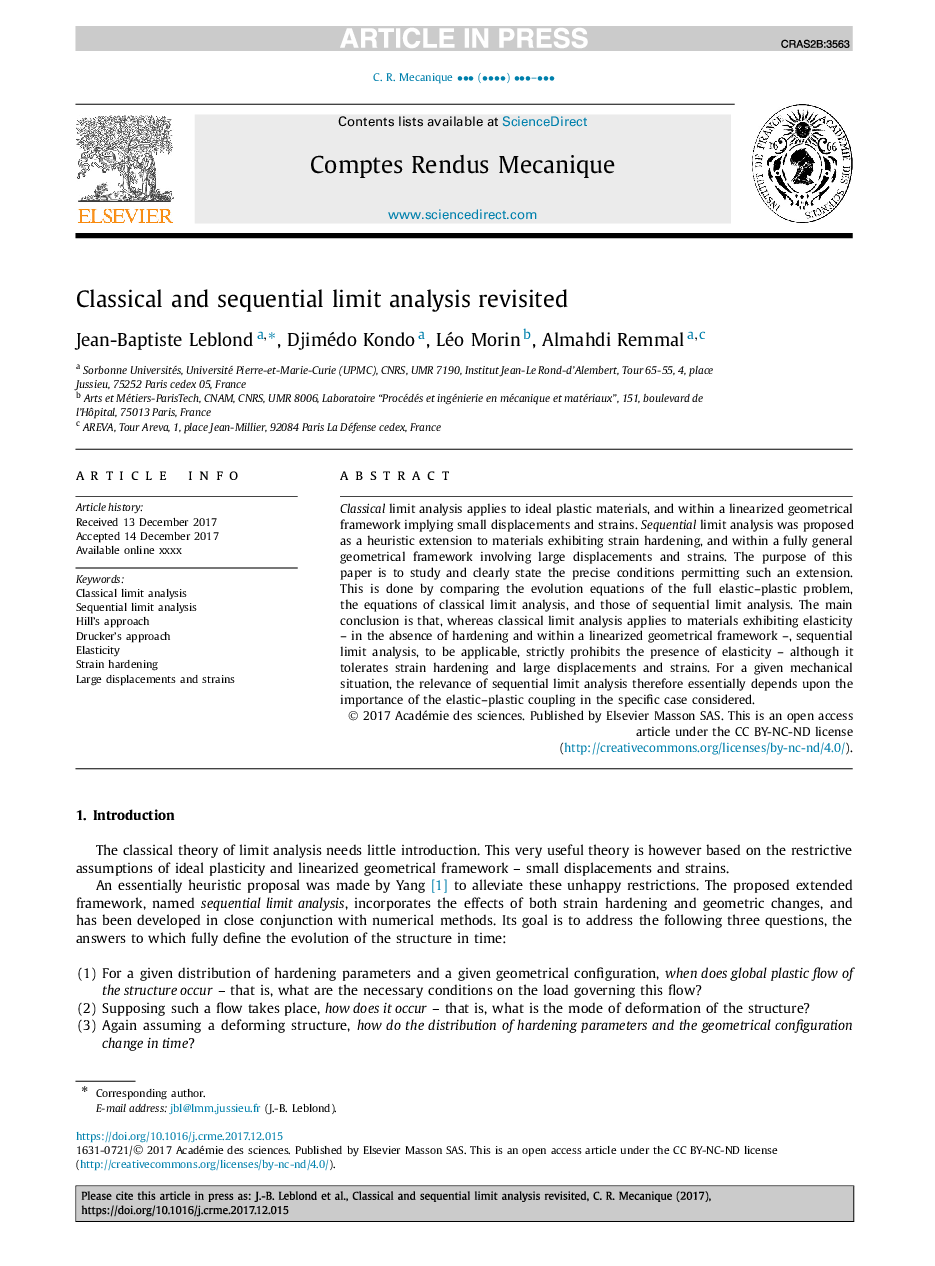| کد مقاله | کد نشریه | سال انتشار | مقاله انگلیسی | نسخه تمام متن |
|---|---|---|---|---|
| 7216136 | 1469640 | 2018 | 14 صفحه PDF | دانلود رایگان |
عنوان انگلیسی مقاله ISI
Classical and sequential limit analysis revisited
ترجمه فارسی عنوان
تجزیه و تحلیل محدود کلاسیک و ترتیبی مجددا بررسی شد
دانلود مقاله + سفارش ترجمه
دانلود مقاله ISI انگلیسی
رایگان برای ایرانیان
کلمات کلیدی
تجزیه و تحلیل محدودیت کلاسیک، تجزیه و تحلیل حد محدود، رویکرد هیل، رویکرد دراکر، قابلیت ارتجاعی، استحکام کششی، جابه جایی های بزرگ و سویه ها،
ترجمه چکیده
تجزیه و تحلیل محدودیت کلاسیک در مورد مواد پلاستیکی ایده آل، و در یک چارچوب هندسی خطی شده است که مستلزم جابجایی های کوچک و سویه ها است. تجزیه و تحلیل محدودیت به عنوان یک گسترش اکتشافی برای مواد سخت افزاری نشان داده شده و در قالب یک چارچوب کاملا هندسی شامل جابه جایی های بزرگ و سویه ها پیشنهاد شده است. هدف از این مقاله مطالعه و به روشنی بیان شرایط دقیق اجازه چنین توسعه است. این کار با مقایسه معادلات تکاملی مساله الاستیک کامل پلاستیکی، معادلات تحلیل محدودی کلاسیک و تجزیه و تحلیل محدودیت های متوالی صورت می گیرد. نتیجه اصلی این است که در حالی که تجزیه و تحلیل محدودیت های کلاسیک در مورد مواد کشش الاستیک - در غیاب سخت شدن و در یک چارچوب هندسی خطی - استفاده می شود، تجزیه و تحلیل محدودیت پیگیری، قابل اجرا است، به شدت از حضور کششی ممنوع - اگر چه تحمل سختی کرنش و جابه جایی های بزرگ و سویه ها. برای یک وضعیت مکانیکی مشخص، ارتباط تجزیه محدودیت پیوسته اساسا بستگی به اهمیت کوپلینگ الاستیک در موارد خاص دارد.
موضوعات مرتبط
مهندسی و علوم پایه
سایر رشته های مهندسی
مهندسی (عمومی)
چکیده انگلیسی
Classical limit analysis applies to ideal plastic materials, and within a linearized geometrical framework implying small displacements and strains. Sequential limit analysis was proposed as a heuristic extension to materials exhibiting strain hardening, and within a fully general geometrical framework involving large displacements and strains. The purpose of this paper is to study and clearly state the precise conditions permitting such an extension. This is done by comparing the evolution equations of the full elastic-plastic problem, the equations of classical limit analysis, and those of sequential limit analysis. The main conclusion is that, whereas classical limit analysis applies to materials exhibiting elasticity - in the absence of hardening and within a linearized geometrical framework -, sequential limit analysis, to be applicable, strictly prohibits the presence of elasticity - although it tolerates strain hardening and large displacements and strains. For a given mechanical situation, the relevance of sequential limit analysis therefore essentially depends upon the importance of the elastic-plastic coupling in the specific case considered.
ناشر
Database: Elsevier - ScienceDirect (ساینس دایرکت)
Journal: Comptes Rendus Mécanique - Volume 346, Issue 4, April 2018, Pages 336-349
Journal: Comptes Rendus Mécanique - Volume 346, Issue 4, April 2018, Pages 336-349
نویسندگان
Jean-Baptiste Leblond, Djimédo Kondo, Léo Morin, Almahdi Remmal,
